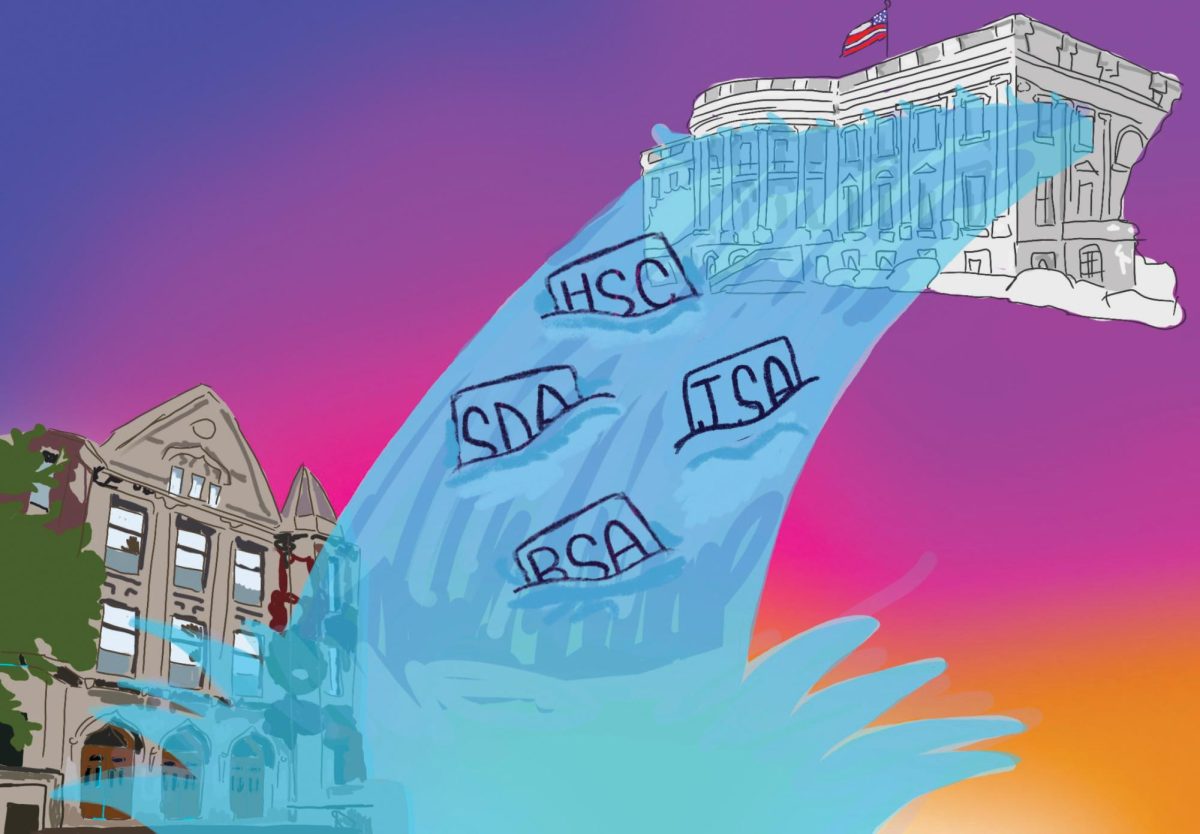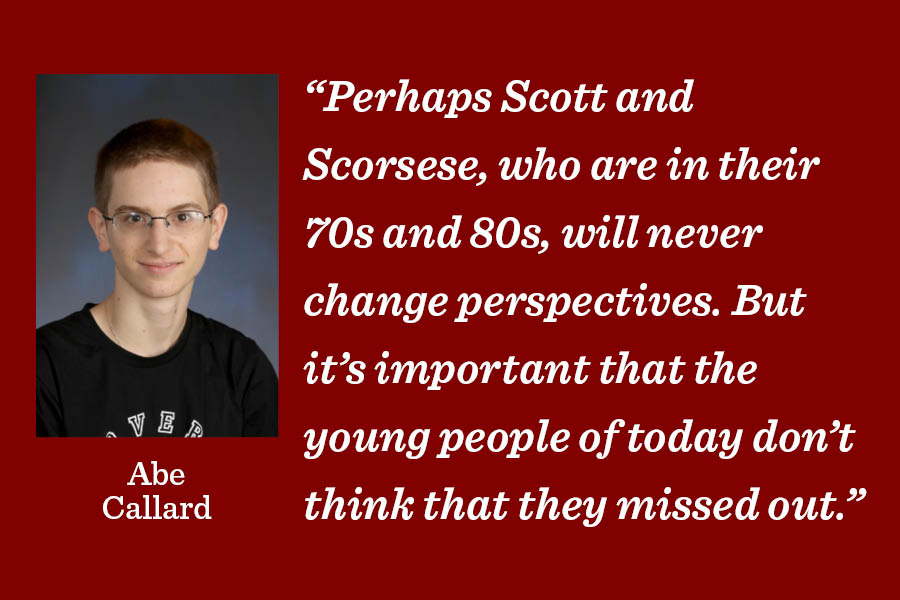Movies are in their prime
We always talk about how good things used to be, assuming that they were better than what is now without really looking.
April 29, 2020
“Cinema is gone,” said Martin Scorsese in 2016. “The cinema I grew up with and that I’m making, it’s gone.” The same year, fellow film legend Ridley Scott echoed his complaints: “Cinema mainly is pretty bad.”
The term Golden Age of Hollywood traditionally refers to 1915-1963, a time when major studios produced glamorous, lucrative, star-focused pictures. This period saw the release of some of the greatest films of all time — “Citizen Kane,” “Sunset Boulevard,” “Casablanca” and “Vertigo.” Many, including Scorsese and Scott, see it as the good old days. Yet compared to the present day, these decades were relative cinematic doldrums.
The Golden Age of cinema is happening right now.
An astounding number of great movies have been released in the past decade. “Roma” and “Shoplifters” are some of the most complex, empathetic dramas ever captured on film. “The Revenant” competes with Old Hollywood epics like “Ben-Hur” and “Lawrence of Arabia.” “The Act of Killing” was a watershed moment for documentaries, “Mad Max: Fury Road” for action. “Get Out” and “Parasite” used burlesque horror to launch wicked social critiques. These films took the best elements of Old Hollywood to new heights.
What about Marvel? People often complain about the gargantuan behemoth of Marvel, a franchise that has grossed over $22 billion. What these people fail to realize is that low-class, financially lucrative films have always been around. In 1942, smack in the middle of the supposed Golden Age, the top four highest grossing films were “Mrs. Miniver,” “Yankee Doodle Dandy,” “Random Harvest” and “Road to Morocco” — not exactly cinematic masterpieces.
Independent and creative filmmaking is becoming more accessible to mainstream audiences. Small studios like Neon and A24 have been giving wide releases to original and experimental films — for example, last year’s “The Lighthouse” and “Uncut Gems,” both of which have been critical and financial successes. Moreover, these films are blending into mainstream culture; the Sunken Place of “Get Out” is now firmly in the zeitgeist.
The increased public visibility of these unconventional films has also given a voice to filmmakers whose stories would previously have gone untold. In 2015, Sean Baker’s “Tangerine,” a film about black transgender sex workers shot on iPhones with a $100,000 budget according to Wired, was a huge success and became a niche classic. “Moonlight” won Best Picture in 2017, and “Parasite” won in 2020. World cinema is also booming — 2019 boasted the highest world box office of all time. Cinema is becoming more egalitarian.
Perhaps Scott and Scorsese, who are in their 70s and 80s, will never change perspectives. But it’s important that the young people of today don’t think that they missed out. Movies are as good as they’ve ever been — and right now, the industry is in need of support. In the past few months, the theater industry has been shut down. With many films coming to VOD (Video On Demand) and streaming services like Amazon, Netflix and Hulu, it is a perfect time to catch up on classic and modern-day masterpieces.




























































